Page 1
Click on Listen above and then read on....below.
Click on Listen above and then read on....below.
|
|
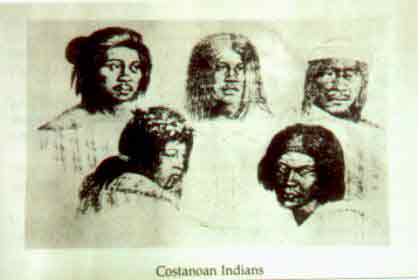
|
The Ohlone or Coastanoan Indians (meaning coast people, as they primarily lived along the bay and delta) were the first people to reside in the area we now call Castro Valley. European influence was not fully felt here until 1769, with the arrival of the Franciscan missionaries from Spain.
|
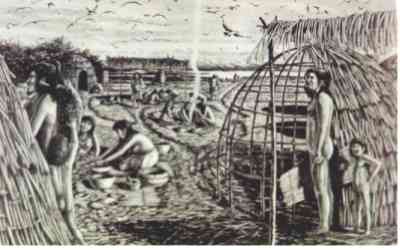
Depictions of a typical Ohlone Village 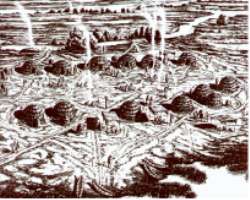
|
As many as 30 or 40 Ohlone villages once rimmed the shores of San Francisco Bay. Most villages consisted of between 10 to 15 families. Dome shaped houses were made from tule reeds growing in the marshlands and were gathered around a central clearing. Elevated graineries stored acorns which were ground and prepared as a mush. When the tules became dry, they would be burned and the structures rebuilt. This practice also controlled fleas and vermin. Over 400 shell mounds, remnants of the Ohlone's sea food consumption, remained as artifacts of village life until the early 1900s, witness to a thriving population. Food was not a problem and sharing from the hunt was a point of honor in Ohlone society. Village society was cooperative rather than competitive. Villages had one or more sweat houses, dug into the ground at the edge of the village or on the downstream side of the creek. Gathering there was a ritual of reverence and purification observed before a hunt. A death brought enormous grief to the Ohlones and was cermoniously observed by wailing and tears from family and villagers both near and far. According to ritual, all possessions of the deceased: bows; blankets; medicine mortar, and more were broken or disfigured at the owner's death. |
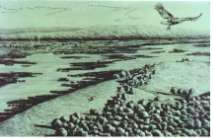
Vast marshlands surrounded the bay. 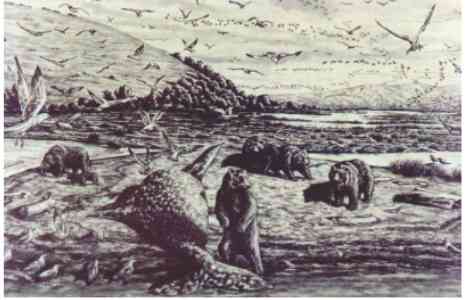
Great California grizzly bears were everywhere...roaming the beaches, feeding on berries, acorns and along stream and creeks during salmon and steelhead runs. |
The landscape was very different in the days of the Ohlones. Marshes spread for thousands of acres, fringing the shores of the bay. The area was filled with huge flocks of waterfowl and birds. Tall bunch grasses covered vast meadowlands and tree spotted savannahs. Oak, Bay, and Redwood forests covered many of the surrounding hills. Huge herds of deer and antelope grazed the meadowslands.
A local stronghold of the Ohlones was known as the "Springs." Fairmont
Hospital now stands at its site.
|
|
|
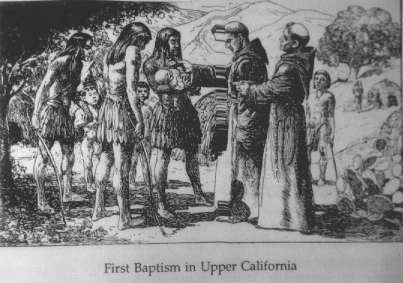
Depiction of the first Baptism in upper California |
The Franciscan Fathers founded Mission San Jose in 1797. There, they
converted many of the indigenous population to Christianity and taught them
agriculture, trades and other arts of their culture.
When Spanish rule in Mexico ended in 1821, the new Mexican government did not approve of the activities of the missionaries. A decree forced the Indians from the mission, the land fell into neglect
and the buildings were plundered.
During this period, 1833 to 1846, many of the vast Mexican land grants were settled, changing the area the Indians had known forever. By 1842, only 400 Indians remained at the mission. These converts were demoralized. Others returned to traditional hunting and foraging in a landscape now roamed by settlers and cattle. |
To go back to the CV History Intro page
Click
here
To go back to www.MyCastroValley.com
Click
Here